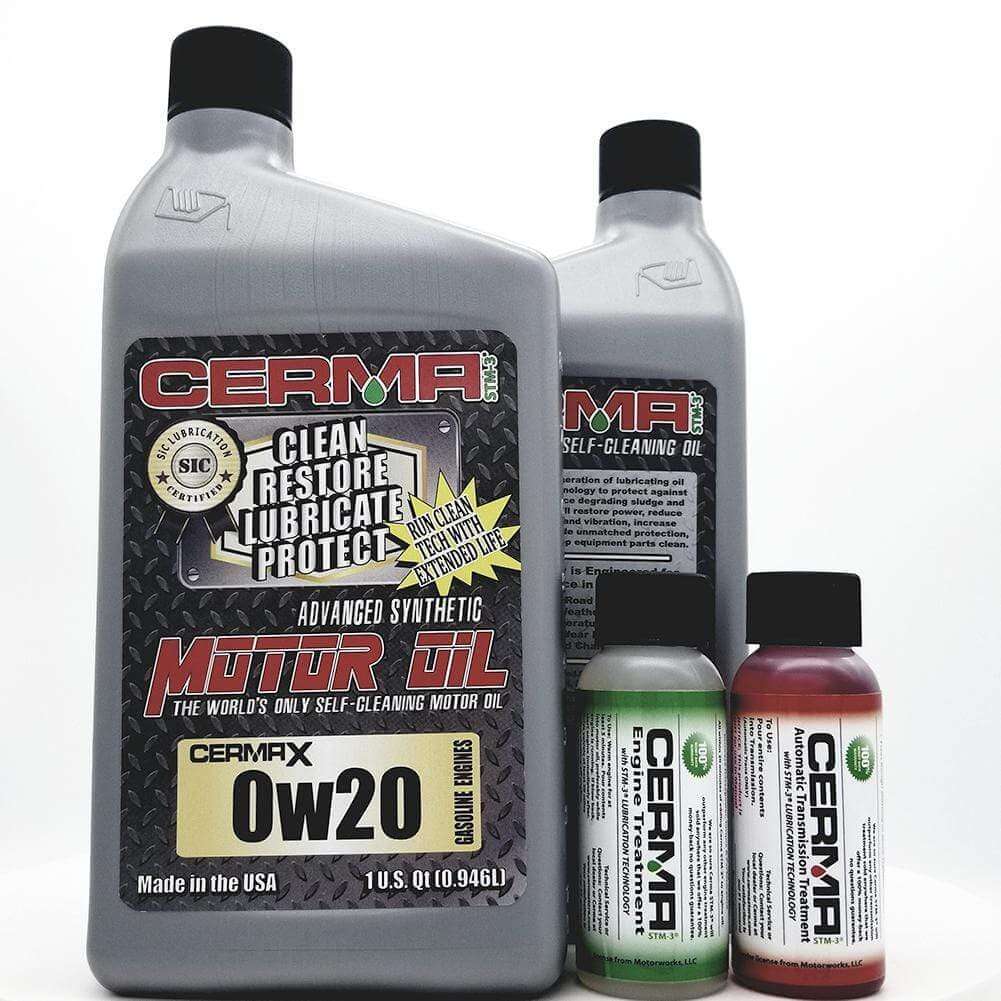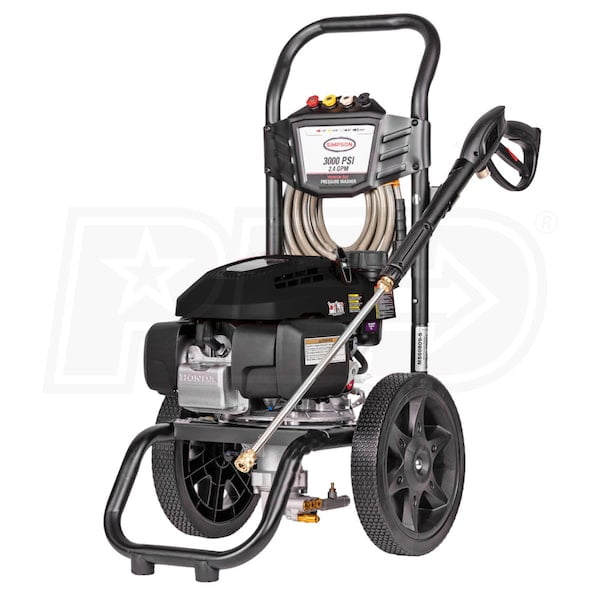- Jeep Cherokee Push Button Start Not Working: Troubleshooting Tips To Get You Back on the Road Fast! - 11 November 2023
- Haval H2 Problems: The Complete Troubleshooting Guide - 11 November 2023
- Gwm P Series Problems: Troubleshooting Guide for Common Issues - 11 November 2023
To clean turbo oil from an engine, first, spray an all-purpose cleaner, such as Oil Eater®, over the entire engine bay, ensuring thorough coverage. Let it soak for five minutes, then scrub the area with a non-metallic brush to loosen the greasy build-up.
Finally, rinse off everything with a hose. The turbocharger bearing system is lubricated by oil from the engine, which is fed under pressure into the bearing housing, through the journal bearings and thrust system. The oil also acts as a coolant, dissipating heat generated by the turbine.
Cleaning the turbo without removing it can be done using various turbo cleaner sprays and kits specifically designed for diesel or petrol engines, such as Best Diesel Turbo Cleaner or Petrol Turbo Cleaner.
Why Cleaning The Turbo Is Necessary
Regularly cleaning the turbo oil in your engine is crucial for maintaining its performance and longevity. The turbocharger plays a vital role in boosting engine power, but it also accumulates oil deposits over time due to the intense heat and high speeds it operates at. These deposits can lead to oil blockages, reduced efficiency, and ultimately, engine failure if left unaddressed. In this section, we will explore the importance of regular maintenance and cleaning, as well as the consequences of neglecting turbo oil cleaning.
Importance Of Regular Maintenance And Cleaning
Regular maintenance and cleaning of the turbo oil system are essential for several reasons:
- Extended Turbo Lifespan: Cleaning the turbo regularly helps remove oil contaminants that can cause damage and wear to the turbine and compressor wheels. By preventing the build-up of deposits, you can extend the lifespan of the turbocharger.
- Optimal Performance: When the turbo oil passages are clean, oil flows freely, ensuring proper lubrication and cooling of the turbocharger components. This allows the turbocharger to operate at its peak performance, providing maximum power and efficiency.
- Fuel Economy: A clean turbocharger promotes efficient combustion by maintaining the correct air-fuel ratio. This, in turn, can result in improved fuel economy, saving you money at the pump.
Consequences Of Neglecting Turbo Oil Cleaning
Neglecting turbo oil cleaning can have severe consequences for your engine:
- Restricted Oil Flow: Over time, oil deposits can clog the turbo oil passages, restricting the flow of oil to the turbocharger’s critical components. This can lead to inadequate lubrication, increased friction, and accelerated wear and tear.
- Reduced Turbo Efficiency: As oil deposits accumulate on the turbine and compressor wheels, they create an imbalance, causing the turbocharger to spin less efficiently. This can result in reduced boost pressure, slower acceleration, and decreased overall performance.
- Oil Contamination: When the turbo oil system is contaminated, the oil circulating throughout the engine can become contaminated as well. Contaminated oil can damage other engine components, leading to costly repairs and potentially catastrophic engine failures.
Now that we understand the importance of regular turbo oil cleaning and the potential consequences of neglecting it, it is crucial to incorporate this maintenance task into your engine maintenance routine. In the next sections, we will explore the best practices and methods for effectively cleaning turbo oil from your engine.
Understanding Turbo Oil Feed Lines
Function And Purpose Of Turbo Oil Feed Lines
Turbo oil feed lines play a crucial role in the proper functioning of a turbocharged engine. These lines are responsible for supplying oil to the turbocharger, ensuring smooth operation and preventing potential damage. The primary function of turbo oil feed lines is to provide lubrication to the bearings and other components of the turbocharger. This lubrication helps reduce friction and heat generation, ensuring optimal performance and longevity of the turbocharger.
Common Issues And Problems Associated With Oil Feed Lines
1. Blockages: Over time, oil feed lines may become clogged with sludge, carbon deposits, or other contaminants. These blockages can restrict the flow of oil to the turbocharger, leading to poor lubrication and potential damage to the turbocharger components.
2. Leaks: Another common issue with oil feed lines is leaks. Leaks can occur due to loose fittings, damaged seals, or cracked lines. These leaks can result in oil loss, reduced oil pressure, and insufficient lubrication for the turbocharger.
Importance Of Cleaning And Maintaining Oil Feed Lines
Cleaning and maintaining turbo oil feed lines is essential for the optimal performance and longevity of the turbocharger and the engine as a whole. Regular cleaning helps prevent blockages and ensures proper oil flow to the turbocharger, reducing the risk of damage or failure. Additionally, maintaining these lines helps prevent leaks, maintaining the required oil pressure for lubrication.
Here are some reasons why cleaning and maintaining oil feed lines is important:
- Extended Turbocharger Life: Clean oil feed lines help ensure that the turbocharger is adequately lubricated, reducing the risk of premature wear and extending its lifespan.
- Improved Engine Performance: Proper oil flow to the turbocharger ensures optimal performance, better power delivery, and improved fuel efficiency.
- Reduced Risk of Damage: Blockages and leaks in oil feed lines can lead to oil starvation, causing severe damage to the turbocharger and other engine components. Regular cleaning and maintenance can help prevent such issues, minimizing the risk of costly repairs.
Turbo Cleaning Methods And Techniques
When it comes to maintaining and ensuring the longevity of your engine’s turbo, regular cleaning is key. Turbo oil can accumulate over time, leading to clogs and decreased performance. In this section, we will explore effective methods and techniques for cleaning turbo oil from your engine. Let’s dive in:
Using Carb Cleaner For Initial Flush
When it comes to an initial flush, carb cleaner can be your go-to solution. Carb cleaner is specifically designed to remove dirt, grime, and oil deposits, making it perfect for tackling turbo oil buildup. Here’s how to use carb cleaner for a thorough initial flush:
- Begin by disconnecting the turbo oil line.
- Using a suitable container, catch the oil that drips out when disconnecting the line.
- With the turbo oil line disconnected and the container in place, spray carb cleaner directly into the line.
- Allow the carb cleaner to sit and penetrate for several minutes, allowing it to break down the oil deposits.
- After the desired soaking time, use compressed air to blow out any remaining oil and debris from the turbo oil line.
- Reconnect the turbo oil line and proceed to the next step in the cleaning process.
Flushing The Turbo With Brake Cleaner
Once you have completed the initial flush with carb cleaner, it’s time to proceed with flushing the turbo with brake cleaner. Brake cleaner is known for its strong solvent properties, making it effective in removing stubborn oil buildup. Follow the steps below to flush the turbo with brake cleaner:
- Disconnect the intake pipe from the turbo.
- Spray brake cleaner directly into the turbo’s inlet and outlet, thoroughly saturating the internal components.
- Allow the brake cleaner to sit and dissolve the oil deposits for a few minutes.
- After the soaking period, use compressed air to blow out any remaining oil and debris from the turbo.
- Repeat the process of spraying brake cleaner and blowing out debris until the turbo is clean and free from oil buildup.
- Once the turbo is clean, reattach the intake pipe and move on to the final step in the cleaning process.
Applying Oil To Lubricate The Turbo After Cleaning
After completing the flushing process, it’s crucial to ensure that the turbo is properly lubricated to prevent any damage. Applying oil to the turbo is the final step in the cleaning process. Here’s how to do it:
- Use a high-quality, synthetic oil suitable for turbocharged engines.
- Apply a small amount of oil to the bearing housing of the turbo, ensuring even distribution.
- Rotate the turbo by hand to ensure that the oil reaches all the internal components.
- Make sure to follow the manufacturer’s recommendations for the specific type and quantity of oil required.
By following these turbo cleaning methods and techniques, you can keep your engine running smoothly and ensure optimal turbo performance. Remember to perform regular maintenance to prevent oil buildup and extend the life of your turbo.
Cleaning Oil Residue In Turbo Inlet
When it comes to maintaining the performance and longevity of your engine, cleaning oil residue in the turbo inlet is a crucial step. Over time, oil can accumulate in the turbo inlet, leading to reduced airflow, decreased efficiency, and potential damage to the turbocharger. To ensure optimal performance, it is important to thoroughly clean the turbo inlet and remove any oil residue. In this guide, we will outline the tools and materials required for the cleaning process, provide a step-by-step procedure to remove oil residue from the turbo inlet, and highlight the importance of thorough cleaning for optimal performance.
Tools And Materials Required For Cleaning
To effectively clean the oil residue in the turbo inlet, you will need the following tools and materials:
- Socket wrench
- Screwdriver set
- Clean lint-free cloth or rag
- Cleaner (such as carburetor cleaner or brake cleaner)
- Compressed air
Step-by-step Process For Removing Oil Residue In The Turbo Inlet
- Start by disconnecting the turbo inlet pipe from the turbocharger using a socket wrench. This will provide better access for cleaning.
- Inspect the turbo inlet pipe for any visible oil residue or sludge. Use a clean cloth or rag to wipe away any excess oil.
- Next, apply a generous amount of cleaner (such as carburetor cleaner or brake cleaner) to the cloth or rag.
- Using the cloth or rag soaked in cleaner, carefully clean the inside of the turbo inlet pipe. Pay close attention to areas where oil residue is most likely to accumulate.
- Once the initial cleaning is complete, use compressed air to blow out any remaining oil residue or debris from the turbo inlet pipe. This will help ensure a thorough cleaning.
- Inspect the turbocharger inlet for any signs of oil residue. If necessary, repeat the cleaning process until no oil residue is visible.
- Reconnect the turbo inlet pipe to the turbocharger using a socket wrench.
Importance Of Thorough Cleaning To Ensure Optimal Performance
Thoroughly cleaning the oil residue in the turbo inlet is essential for ensuring optimal performance of your engine. Here’s why:
- Improved airflow: By removing oil residue from the turbo inlet, you allow for better airflow, which can enhance the efficiency and power of your engine.
- Prevention of buildup: Oil residue buildup in the turbo inlet can lead to clogged passages and restricted airflow, ultimately resulting in decreased performance and potential damage to the turbocharger.
- Extended turbocharger life: Regular cleaning of the turbo inlet helps to prevent oil contamination and prolong the life of your turbocharger, saving you from costly repairs or replacements in the long run.
- Optimal fuel efficiency: A clean turbo inlet ensures that the engine receives the right amount of air, promoting better fuel combustion and improved fuel efficiency.
By following the step-by-step process outlined above and understanding the importance of thorough cleaning, you can ensure that your engine performs at its best and remains reliable over time. Regular maintenance and cleaning of your turbo inlet are key to maximizing the performance and longevity of your engine.
Preventive Measures For Turbo Oil Contamination
Keeping your engine’s turbo clean from oil contamination is essential for optimal performance. Follow these preventive measures to clean turbo oil from your engine: use brake or carb cleaner to flush and clean the turbo, replace any clogged or dirty oil inlet pipes, and ensure proper lubrication by using high-quality oil.
Regular maintenance and cleaning will help prolong the life of your turbo and prevent any potential damage.
Replacing Oil Inlet Pipes To Eliminate Carbon Deposits And Sludge
The oil inlet pipes of a turbocharger play a crucial role in supplying oil to the bearings and turbine. Over time, these pipes can become clogged with carbon deposits and sludge, leading to restricted oil flow and potential damage to the turbo. To prevent turbo oil contamination, it is essential to regularly replace the oil inlet pipes.
Importance Of Regular Oil Changes And Filter Replacements
Regular oil changes and filter replacements are vital for maintaining the cleanliness of the turbocharger. Clean oil provides proper lubrication and cooling to the turbo components, preventing the build-up of contaminants that can lead to oil contamination. It is recommended to follow the manufacturer’s guidelines for oil change intervals and use high-quality oil filters.
Tips For Maintaining Cleanliness To Prolong Turbo Lifespan
- Use high-quality synthetic oils: Synthetic oils have superior cleaning properties and can help prevent the formation of sludge and carbon deposits in the turbocharger.
- Avoid extended idling: Extended idling can cause oil to break down and form deposits in the turbo. It is best to avoid prolonged idling whenever possible.
- Warm up and cool down properly: Allow the engine to warm up before driving and let it cool down after long drives. This helps reduce the accumulation of moisture and oil oxidation, which can contribute to turbo oil contamination.
- Inspect and clean the turbo intake regularly: Check the turbo intake for any signs of oil contamination or debris accumulation. Cleaning the intake regularly helps prevent the ingestion of contaminants into the turbo.
- Monitor oil pressure and temperature: Keep an eye on the oil pressure and temperature gauges to ensure they are within the recommended range. Abnormal readings can indicate potential issues that may lead to turbo oil contamination.
By implementing these preventive measures, you can maintain the cleanliness of your turbocharger and prolong its lifespan. Regular maintenance and care will ensure optimal performance and minimize the risk of turbo oil contamination.

Credit: cermatreatment.com
Frequently Asked Questions On How To Clean Turbo Oil From An Engine
What’s The Best Way To Clean Oil Off An Engine?
To clean oil off an engine, spray Oil Eater® All Purpose Cleaner over the engine bay. Let it sit for five minutes, then scrub with a non-metallic brush. Rinse thoroughly with a hose. The turbocharger gets oil from the engine, so make sure to follow the manufacturer’s instructions when cleaning turbo oil feed pipes.
Cleaning a turbo without removing it may require a turbo cleaning kit or professional service.
Does The Turbo Get Oil From The Engine?
The turbocharger gets oil from the engine. It is lubricated by oil that is fed under pressure into the bearing housing, lubricating the journal bearings and thrust system and acting as a coolant for the turbine.
Can You Clean A Turbo Oil Feed Pipe?
Yes, you can clean a turbo oil feed pipe. Ensure to follow critical instructions when replacing turbo oil feed pipes and consider using a turbo cleaner spray or turbo cleaning kit for effective cleaning without removing the turbo.
Can You Clean A Turbo Without Removing?
No, you cannot clean a turbo without removing it.
How Often Should I Clean My Turbo Oil Feed Lines?
Regularly cleaning your turbo oil feed lines is essential to prevent sludge buildup and maintain optimal performance.
Conclusion
To ensure optimal performance and longevity, it’s important to clean turbo oil from your engine regularly. Cleaning the turbo not only removes oil residue but also helps prevent sludge buildup and maintains the efficiency of the turbocharger. Using an effective cleaner like Oil Eater® All Purpose Cleaner can easily remove oil and grease from the engine bay.
Remember to let the cleaner soak for a few minutes and scrub with a non-metallic brush before rinsing thoroughly. Keeping your turbo clean is crucial for its smooth operation and avoiding damage in the long run. Don’t forget to follow the critical instructions while replacing turbo oil feed pipes.


